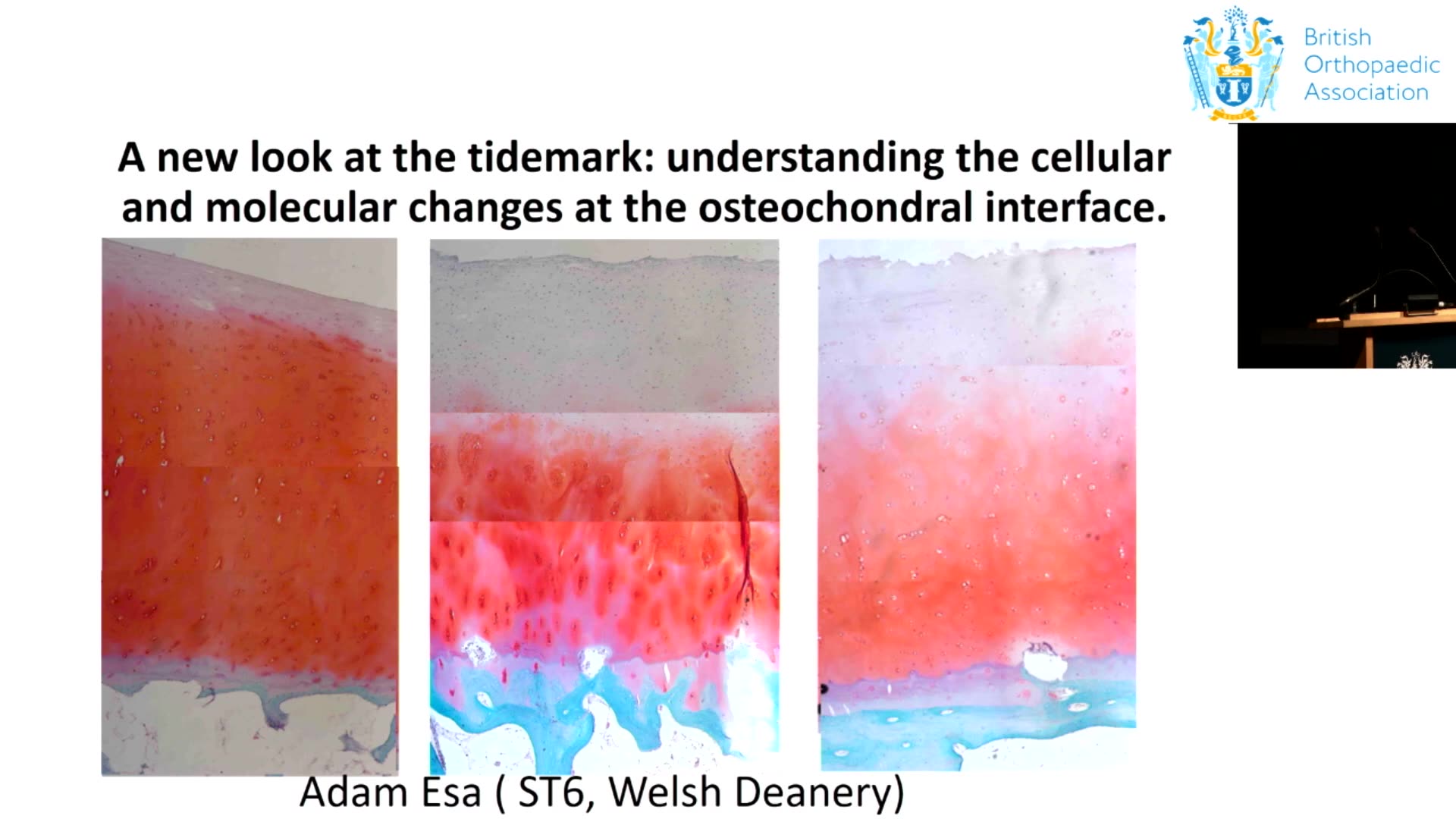Please login to view this media

- Talk
- 21/09/2022
- UK
A New Look at the Tidemark: Understanding the Cellular and Molecular Changes at the Osteochondral Interface
Description
In this presentation, Adam Esa, an ST6 in Wales, discusses a new perspective on the tide mark and its implications for understanding the pathogenesis of osteoarthritis. He explains that previous research highlights the critical role of subchondral bone in the disease's development. Adam focuses on the tide mark, a basophilic acellular region delineating non-calcified from calcified cartilage, and describes his study involving samples of healthy and osteoarthritic osteochondral tissue.
Utilizing the modified Mankin score, he observes degenerative changes in the superficial zone and notes infiltration from underlying subchondral cells as osteoarthritis progresses. He investigates the types of cells infiltrating the tide mark, revealing a significant presence of micro vessels and osteoclasts in osteoarthritic samples compared to healthy tissue. This raises questions about the mechanisms facilitating the invasion of these cells into acellular and avascular cartilage, potentially exacerbating cartilage wear.
Furthermore, he explores the endothelial to mesenchymal transition pathway, originally associated with bone development and certain diseases like cancer, to examine its role in osteoarthritis. His research identifies upregulation of markers like vimentin and a-SMA in osteoarthritis, suggesting a link between endothelial changes and cartilage degeneration. In vitro co-culture experiments demonstrate that endothelial cells become more invasive when stimulated by factors from cartilage and osteoclasts.
Ultimately, Adam proposes that the dynamic between synovial fluid exposure, endothelial activation, and osteoclastic activity may contribute to the accelerated degradation of articular cartilage, providing new insights into potential therapeutic targets for osteoarthritis management.